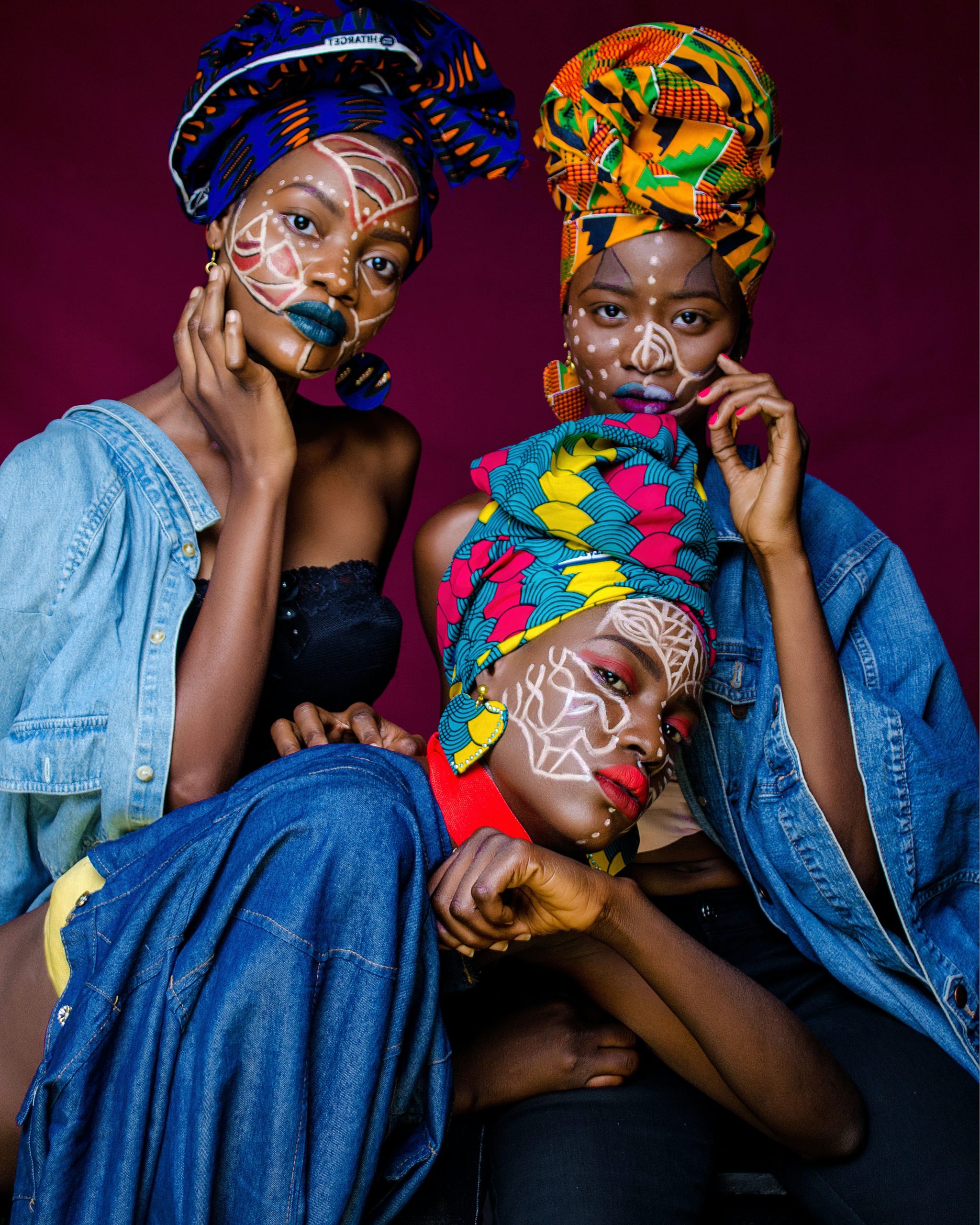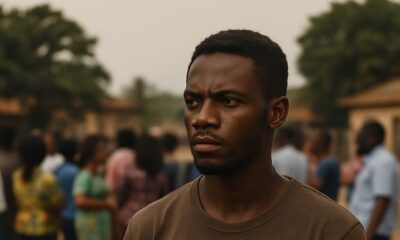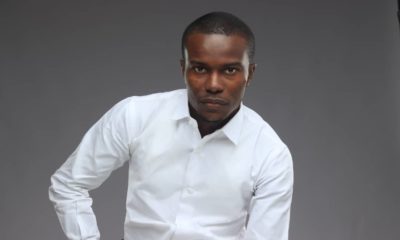Features
A Young Nigerian’s Guide to Learning More About the African Continent
As a Nigerian, it is tempting to think that your country is bigger and better than every other African country, or that Africa ends in West Africa. However, if you have an open mind, you will be able to learn about other African countries, their economy, politics, their people and cultures, and the beauty and uniqueness of this large continent. And to all our non-African folks, remember, Africa is not a country.
For many Nigerians, Africa begins and ends in West Africa. When you ask an average Nigerian to mention countries in Africa, it is common for them to mention Ghana, Togo, Cameroon, Benin-Republic, Côte D’Ivoire, and other neighbouring countries.
A common misconception many Nigerians have about Africa is that it is a continent for only black people and a white person (oyinbo) cannot equally be an African. There’s also the misconception that every black person emerged from Africa. The biggest misconception is that economically, Nigeria is the giant of Africa and all other African countries are not as economically strong or well to do as Nigeria. It’s common to hear an average Nigerian say things like “small Ghana is fighting with us”, “ordinary Rwanda too is talking”.
That is why BellaNaija is introducing The 54, a series that will explore Africa and the African people.
In this series, we will look into the various African cultures, tribes, people, food, arts and music, economy, politics, regions – everything Africa and African.
But for now, let’s give you a glimpse of what this series, The 54, is all about and how we intend to take you on this journey with us.
Culture
Africa is the second-largest continent in the world with 54 countries in it and a population of 1.216 billion people (as of 2016).
In Africa, there are about 3,000 tribes, speaking more than 2,000 different languages. Arabic and Swahili are the most spoken languages in Africa. But with an estimated 35 million people in total, Yoruba is the largest ethnic group in Africa.
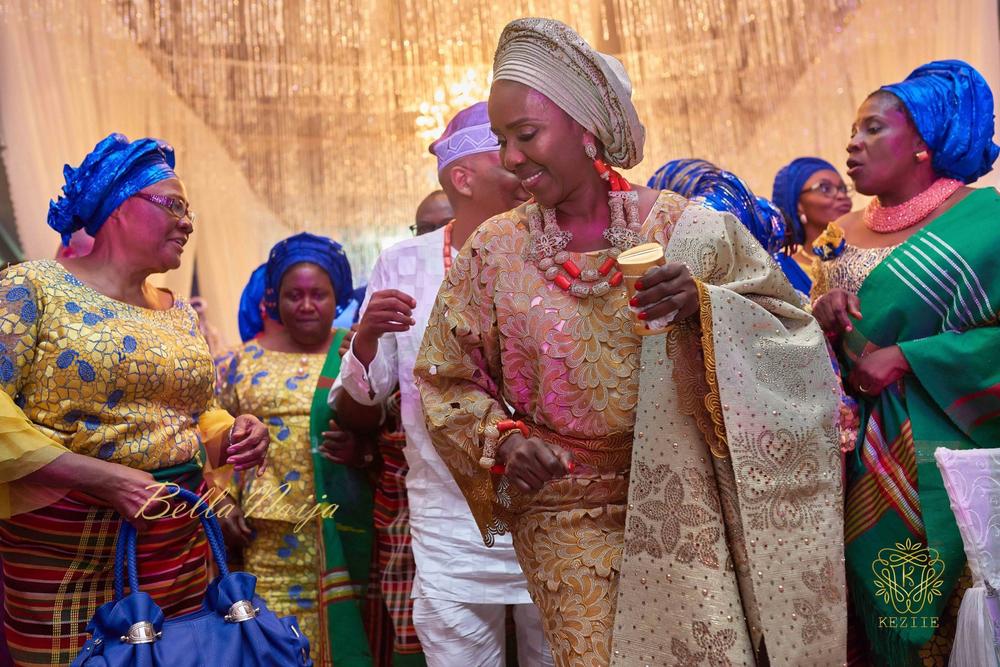
Photo Credit: Banky W and Adesua wedding ceremony
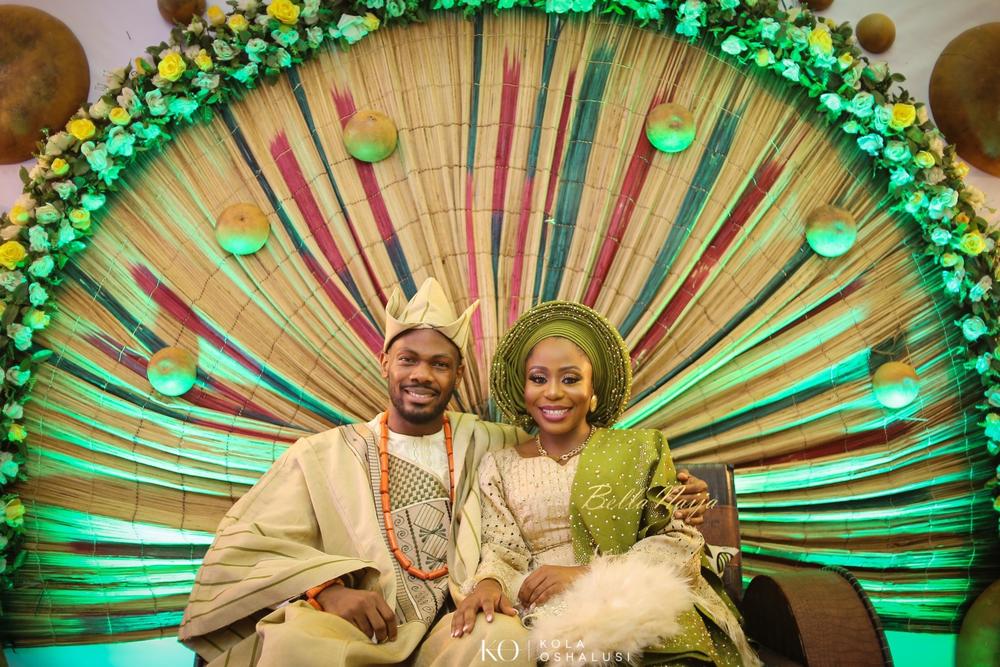
Photo Credit: Toyosi Philips & Etim-Effiong engagement.
Zulu
Zulu, with an estimated population of 11 million people, is known to be the largest ethnic group in South Africa. The Zulu people became a powerful state in 1818, led by a military leader known as Shaka. Zulu beliefs are formed around the presence of ancestral spirits, known as amadlozi and abaphansi.
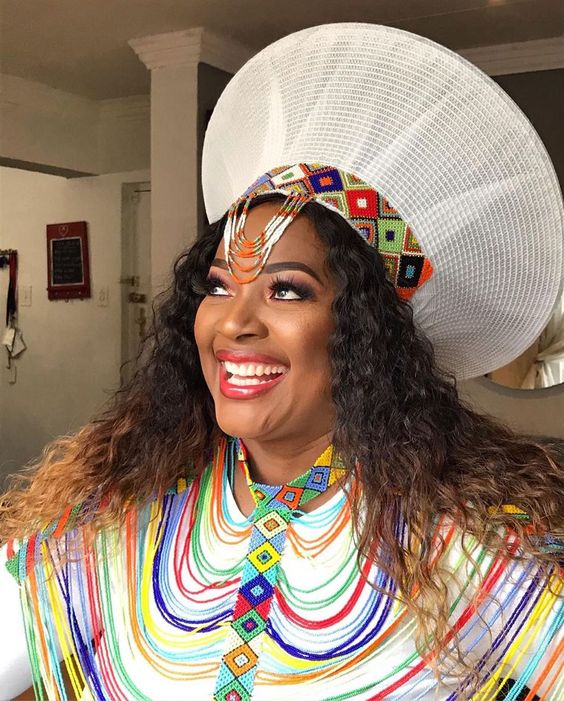
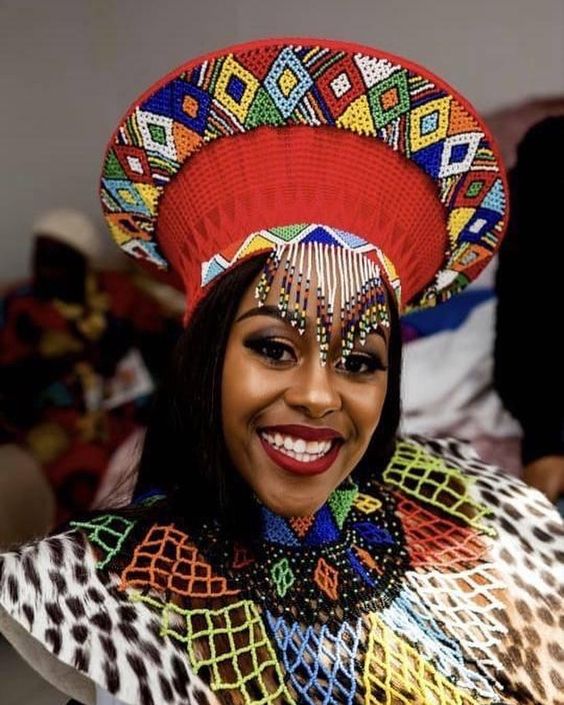

Photo Credit: Pinterest/HadithiAfrica
Himba Tribe
Ovahimba and Ovazimba tribes in Northern Namibia Array, according to the records of the fossil remains in Africa, seems to be the first continent where humans were found. The fossil remains have suggested that humans had inhabited the African continent around 7 million years ago. The first settlements of the Himba people can be traced back to the early 16th century when they crossed the Angolan border and chose Kaokoland (now called Kunene region in Namibia) as their new homeland. The Himba people are known for their red ochre cream.
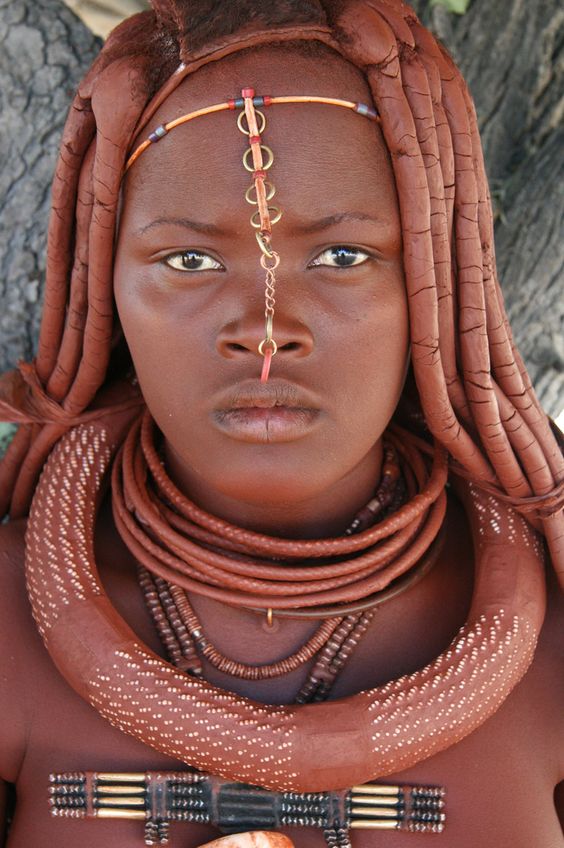
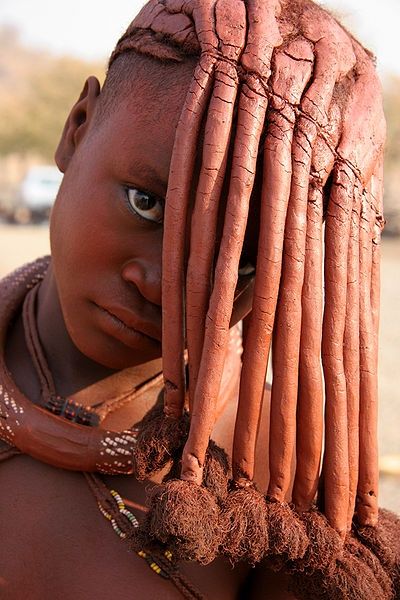
Photo Credit: Pinterest
The Sinai Bedouin People
The Sinai Bedouin are a group of tribes descending from immigrants who arrived from the Arabian Peninsula between the 14th and 18th centuries. In Africa, the Sinai Bedouin people can be found in Egypt.
Because they are mostly nomads, they have never relied on traditional doctors and they take their medicine from nature – herbs, plants. They mostly make their meals at home or in the desert, grow their own vegetables, eat meat they have reared and cook fish they have caught.
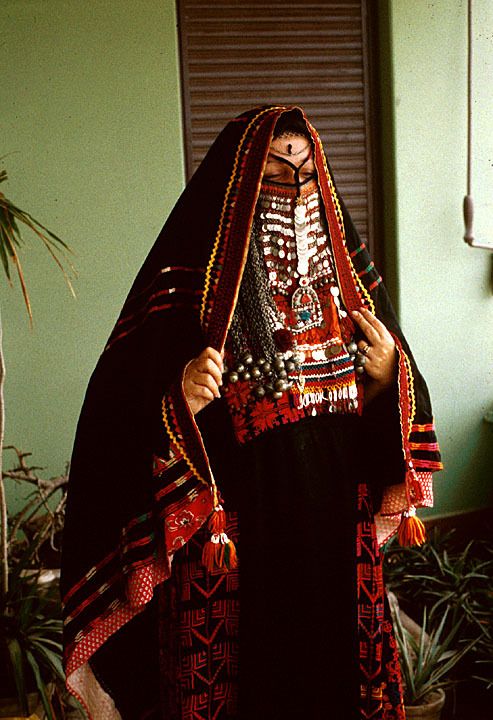
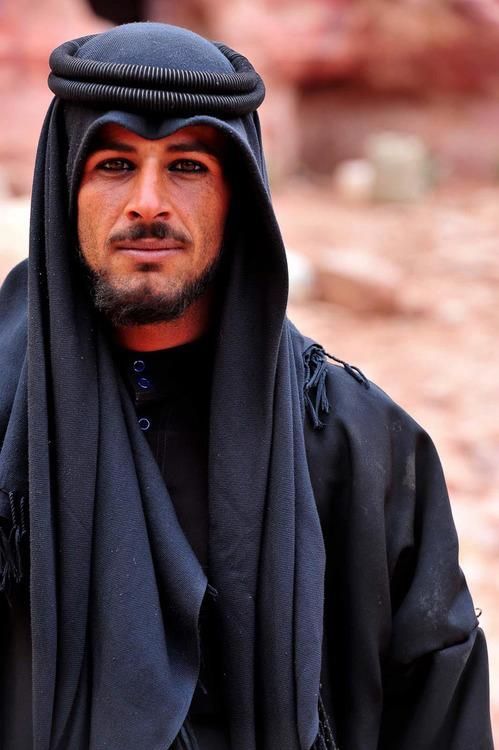
Photo credit: Pinterest
The People of Wodaabe
If you are looking for a place where the women decide who they want to get married to and how many husbands they want, then the Wodaabe tribe is right for you. Pretty and very attractive, the Wodaabé men have often women-like elegant faces and it is very important for the men to look pretty for their their women. In some cases, a man who is not so pretty has to share his wife with another more beautiful man, so the probability a pretty child is born is higher. The Wodaabé tribe is part of the Fulani who were originally Nomads and herdsmen.
We’ll explore more of the Wodaabe tribe in our series.

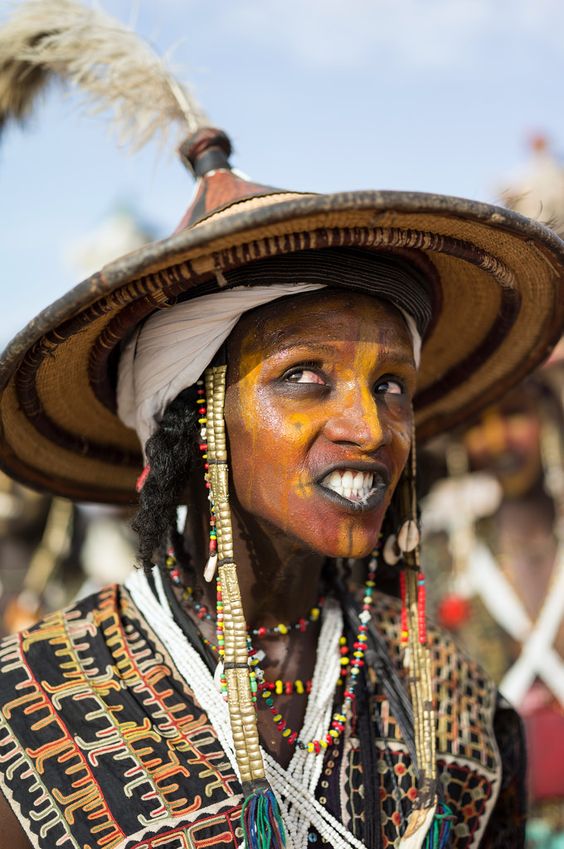
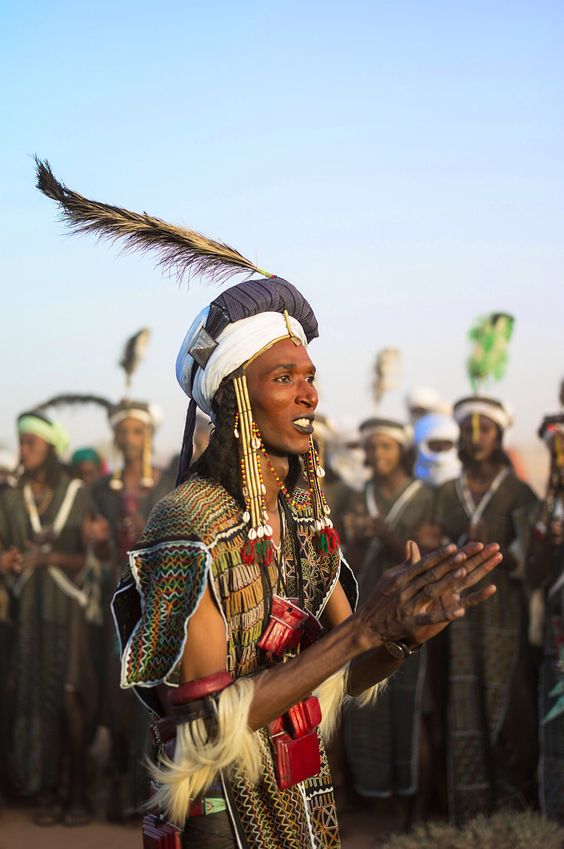
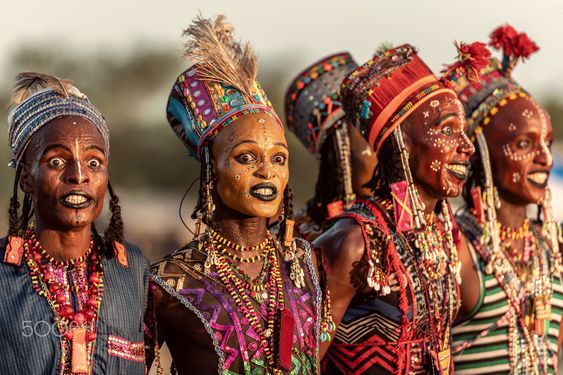
Photo Credit: Pinterest
Hadza Tribe
The Hadza people, in Northern Tanzania, are one of the ‘oldest’ lineages of humankind. The small tribe consists of approximately 1,300 hunter-gatherers: one of the last in Africa.
According to survival international, the Hadza’s homeland lies on the edge of the Serengeti plains, in the shadow of Ngorongoro Crater. It is also close to Olduvai Gorge, one of the most important prehistoric sites in the world, where homo habilis – one of the earliest members of the genus Homo – was discovered to have lived 1.9 million years ago.
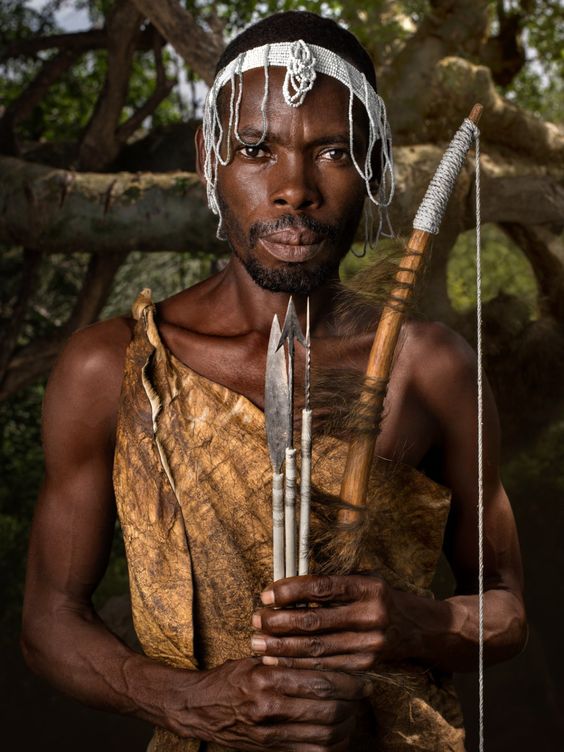
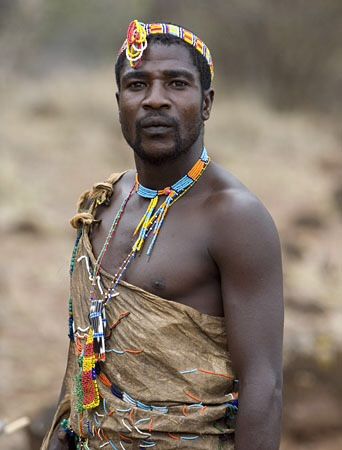
Photo Credit: Pinterest
The Maasai People
Estimated to be about 900,000, the Maasai people, located in Kenya and Tanzania, are among the foremost African ethnic groups in Africa. “According to the tribe’s own oral history, the Maasai originated north of Lake Turkana (north-west Kenya) in the lower Nile Valley. They began migrating south in the 15th century and arrived in the long trunk of land stretching across central Tanzania and Northern Kenya during the 17th and 18th centuries.”
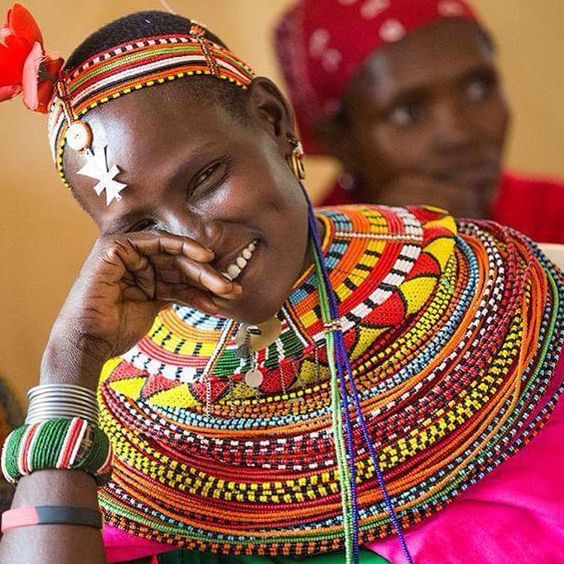
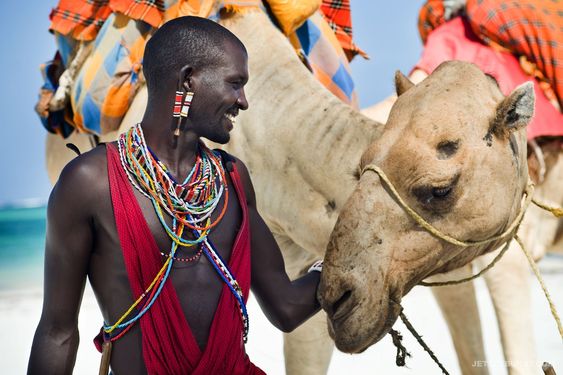

Photo credit: Pinterest
Tuareg People
The Tuareg are a group of Berber clans of obscure origin in Northern Africa. Legend states that under their first queen, Tin Hinan, they moved into the Sahara around 400AD. During medieval times, the Tuareg dominated lucrative trade routes across the desert. Timbuktu, renowned throughout the Muslim world as an intellectual centre, was founded by a Tuareg family in the 12th century. They inhabit the Sahara in a vast area stretching from far southwestern Libya to southern Algeria, Niger, Mali, and Burkina Faso. In the Tuareg tribe, it is the men who cover their hair.
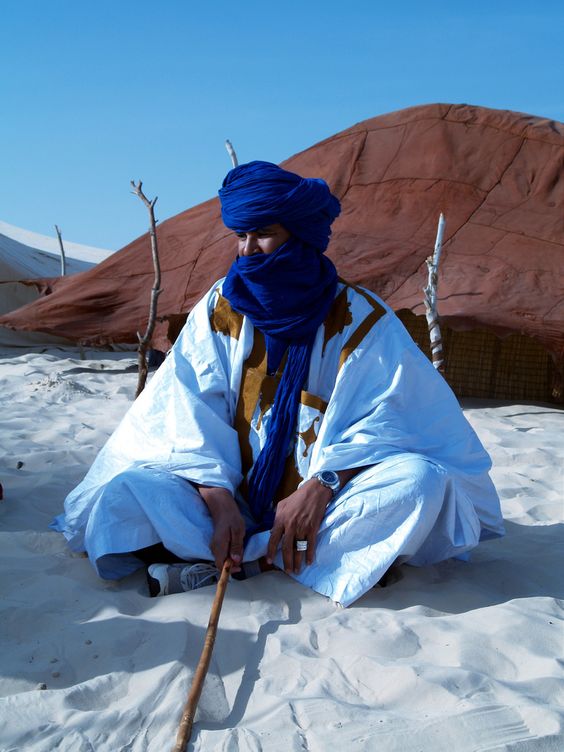
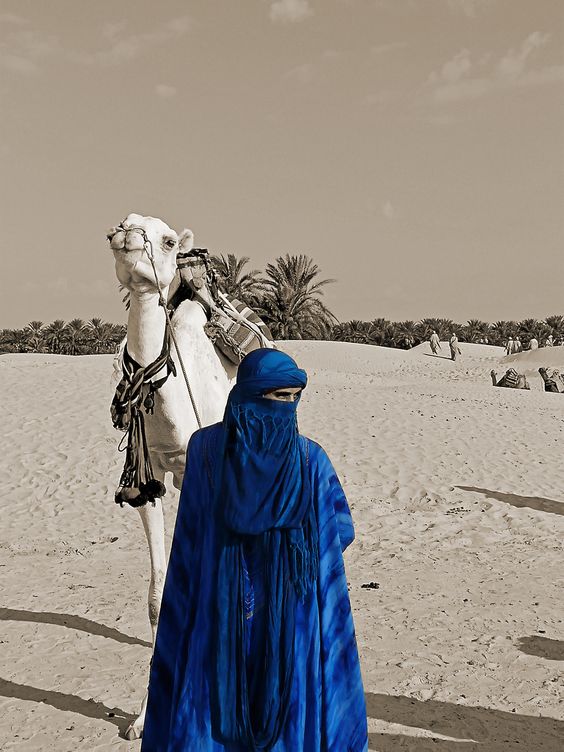
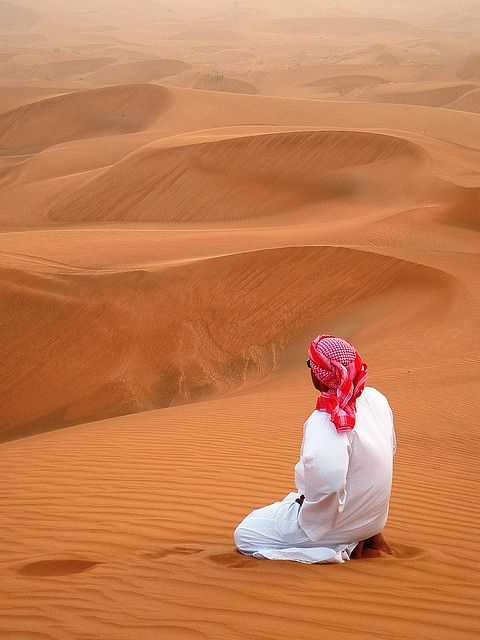
Photo credit: Pinterest
The African Hairdo
If you have watched snippets from Beyonce’s Black Is King and you love the hairdos, it is important for you to be aware of their origin – Africa.
Congo Magbetu’s ‘lipombo’
The Mangbetu were known for their elongated heads. The process of elongating the skull began at birth. The baby’s head was tightly wrapped with a cloth until the desired shape had been achieved. Known as lipombo, the culture was a symbol of affluence among the ruling class. This hairstyle worn by the Mangbetu women was, at a time, very fashionable. This practice can also be traced to the Mayan and Egyptians.
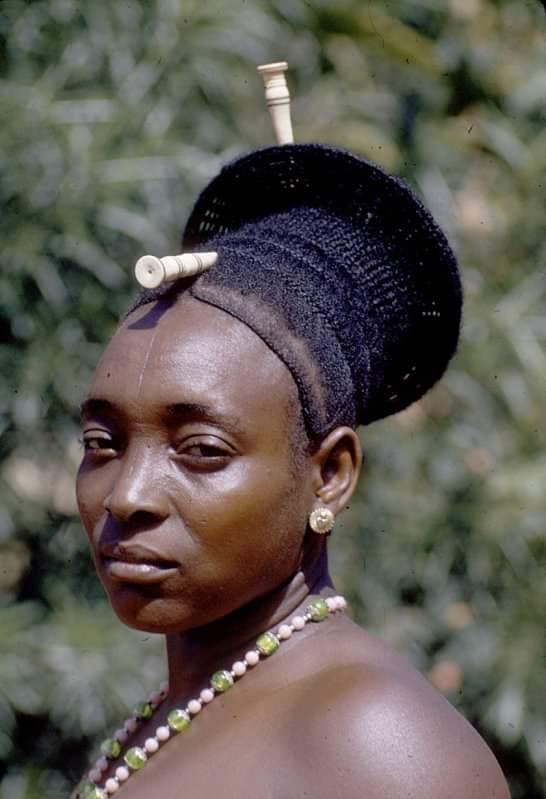

Photo credit: Pinterest
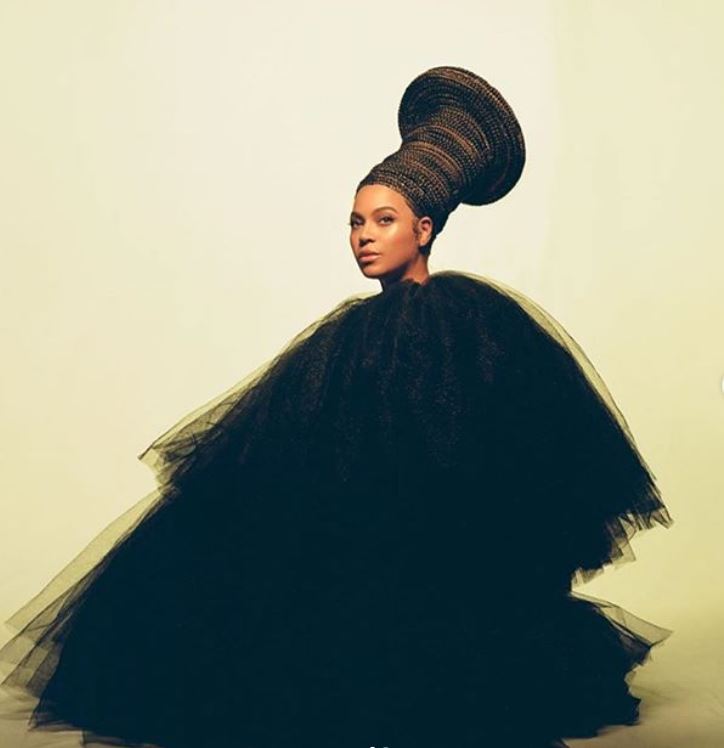
Photo credit: Instagram/nealfarinah
Bantu Knots
The Bantu people are the speakers of Bantu languages, comprising several hundred indigenous ethnic groups in sub-Saharan Africa, spread over a vast area from Central Africa across the African Great Lakes to Southern Africa. Bantu as a major linguistic group in Africa whose existence is in record up to about 5000 years ago. The linguistic group comprises of about 300-600 different ethnic groups totaling to over 100 million individuals across the African continent. Bantu knots has its origin in Africa. They have been a traditional African hairstyle for over 100 years. Bantu means people and Ubuntu means person.
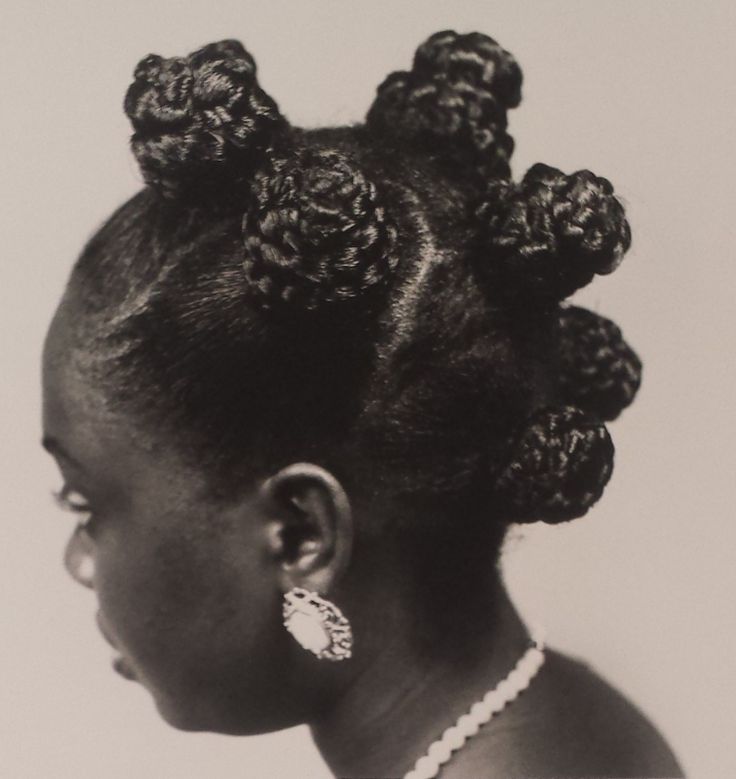
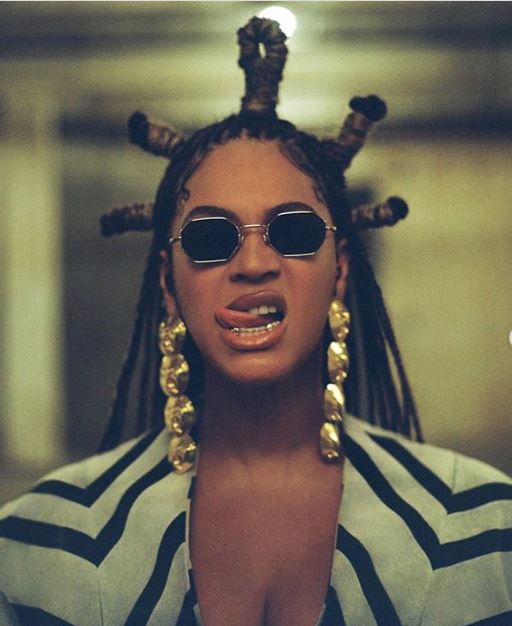
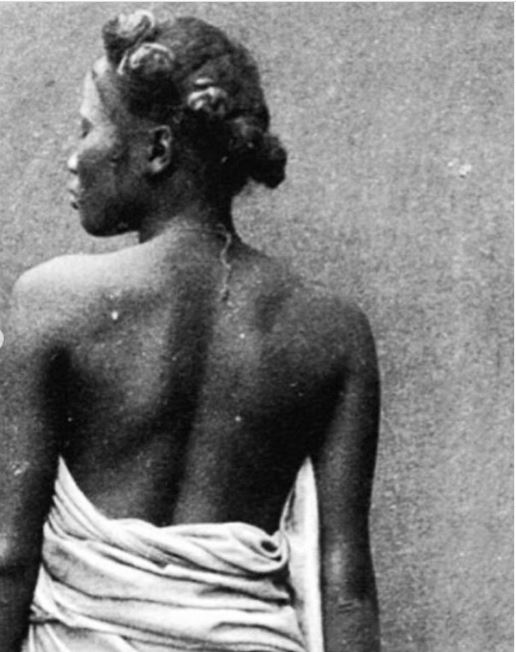
Photo credit: Face2faceafrica/Instagram-nealfarinah
The Horned Hairdo
In ancient Africa, the Mursi women from Ethiopia were known for their horned heads and their huge lip plates. Pre-pubescent Himba girls, in Namibia, also wore two thick braids in front of their faces that looked like ram horns. Surrounded by mountains between the Omo and Mago rivers, the home of the Mursi is one of the most isolated regions of Ethiopia.
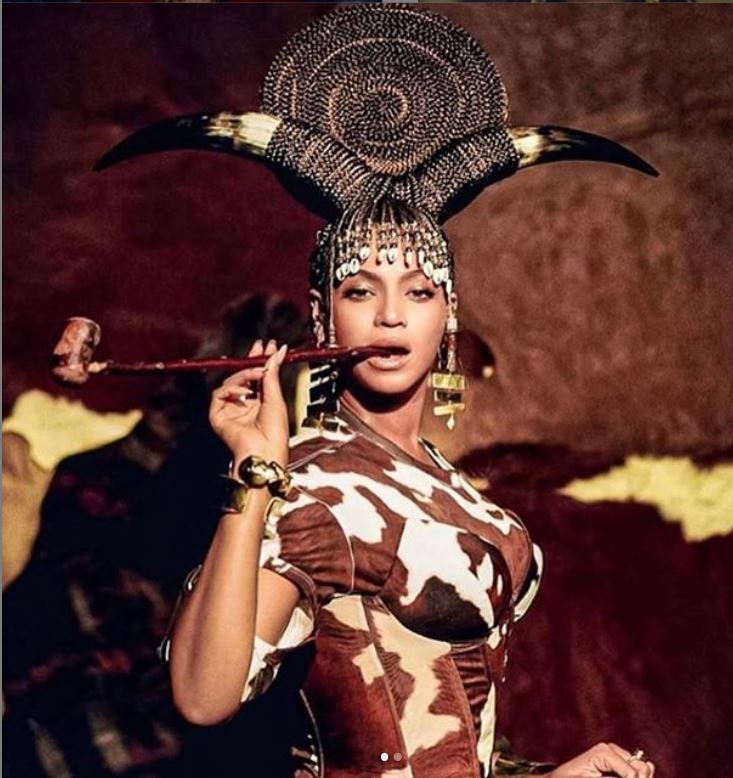
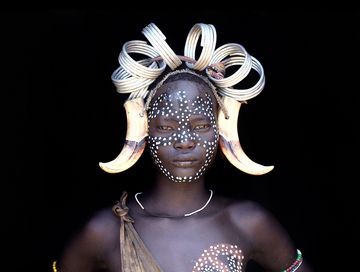
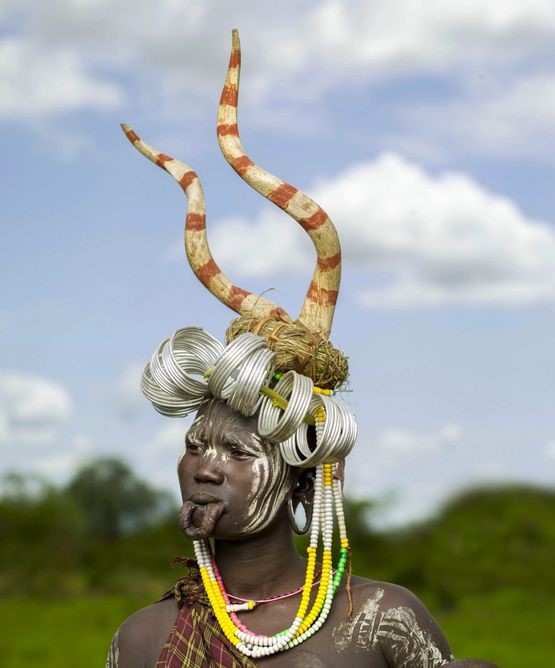
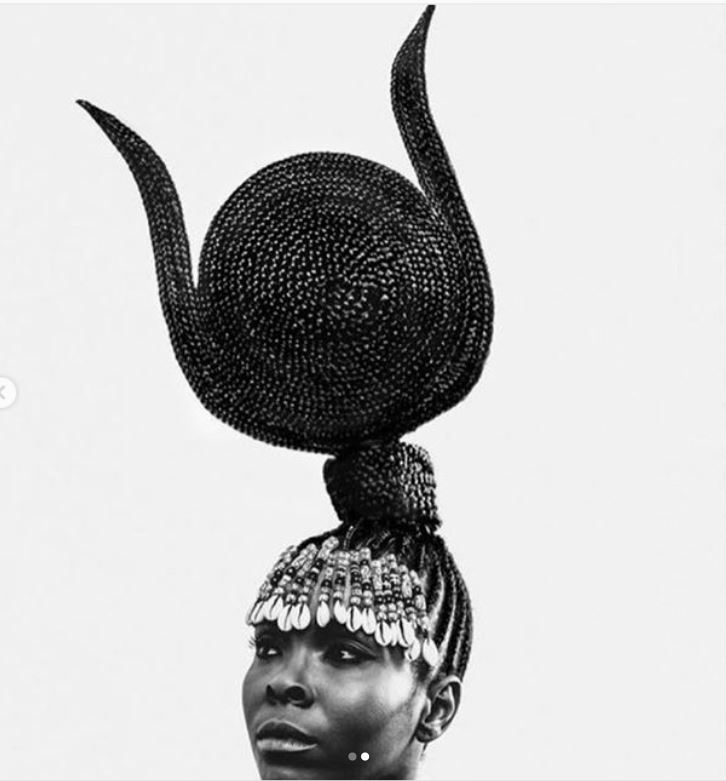
Photo credit: Pinterest/Instagram-nealfarinah
Festivals
For 25 years, Morocco has celebrated the Fes Festival of World Sacred Music. Set up in 1994 and 2001 respectively, this festival comes within the scholarly, artistic, and spiritual tradition of the city of Fez.
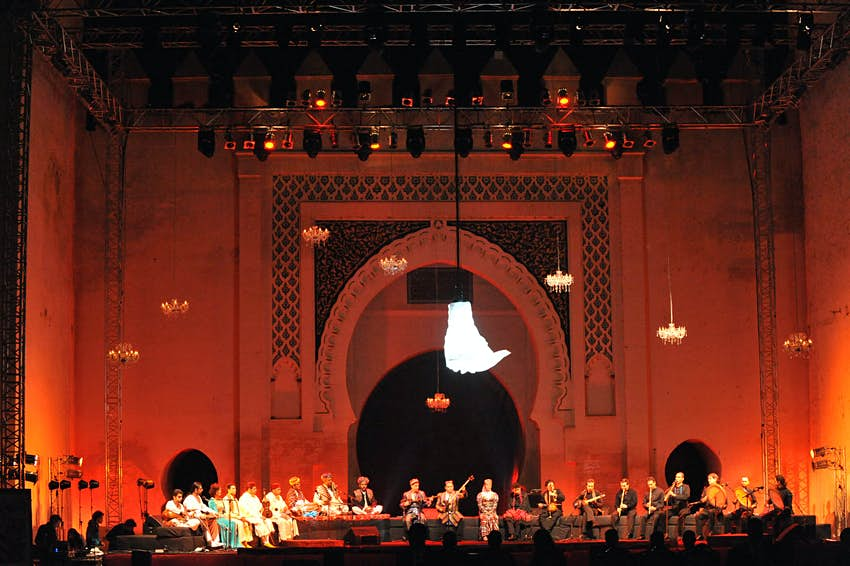
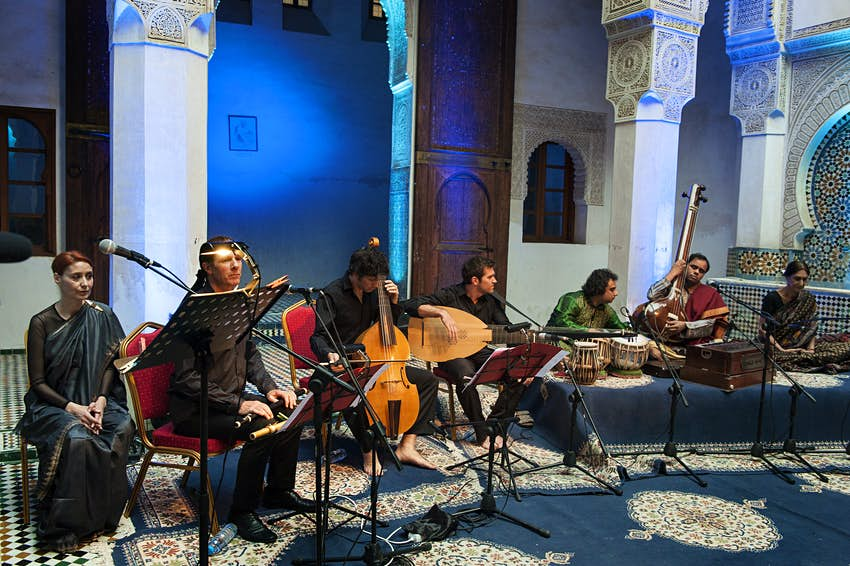
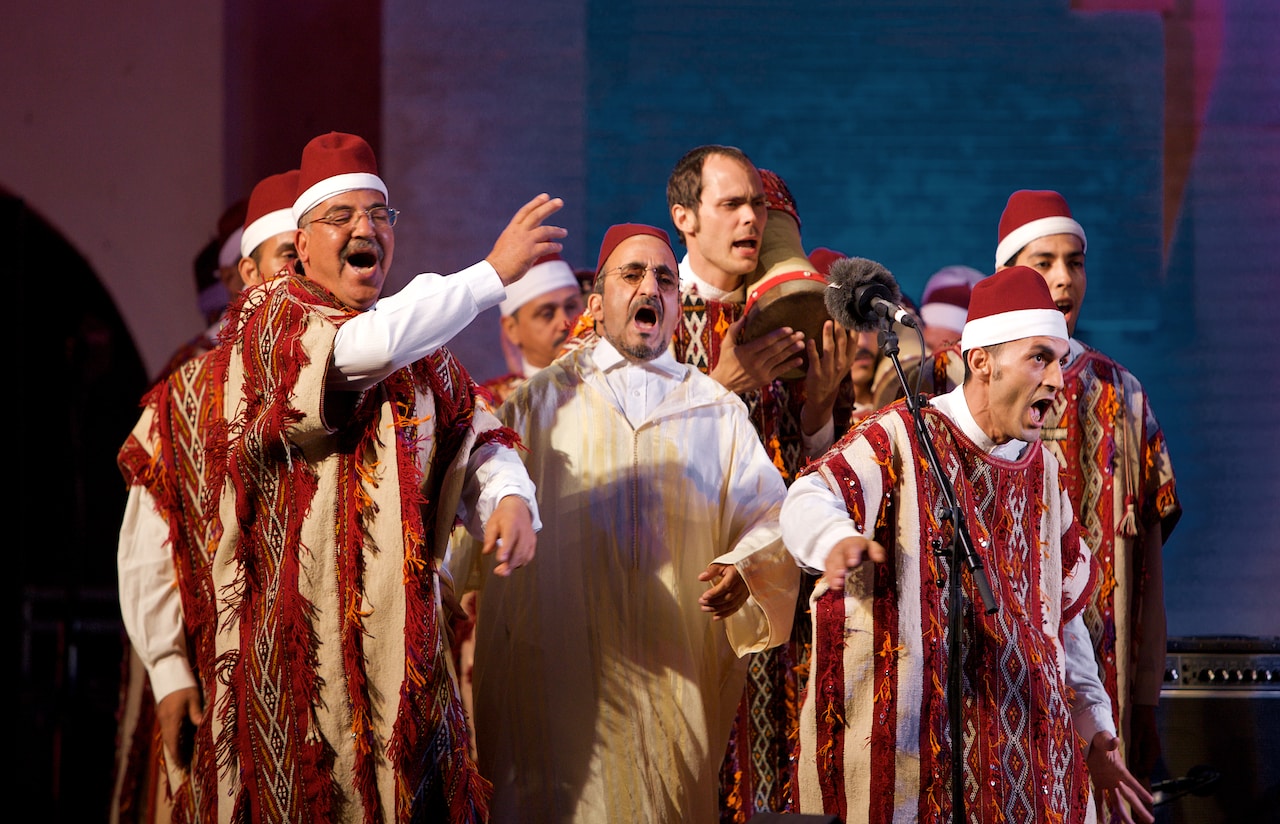
Photo credit: fesfestival
Calabar Festival
The Calabar Festival is arguably the biggest festival in Africa. Attracting over 2 million people yearly from over 25 countries, this month-long festival takes place in Cross River. Held yearly, the Calabar Festival takes place on the street and people are allowed to display their colourful traditional attires, dances, and masquerades.
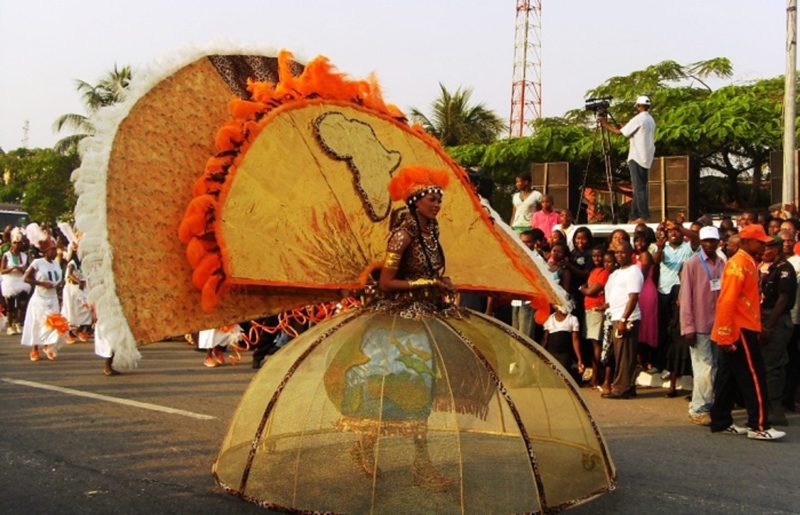
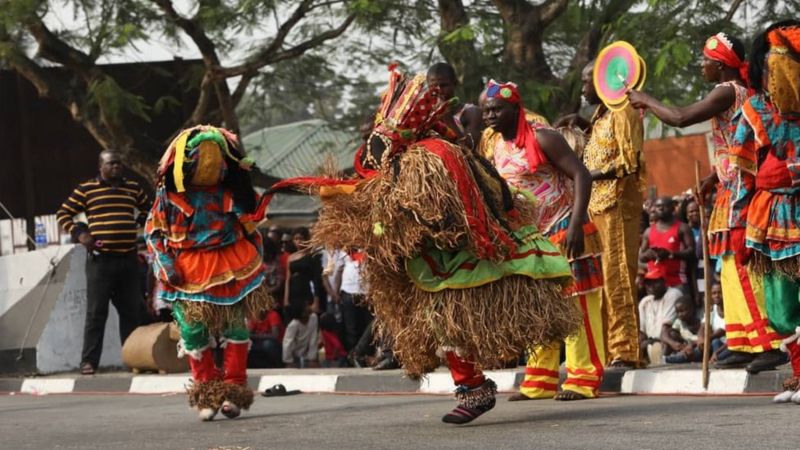
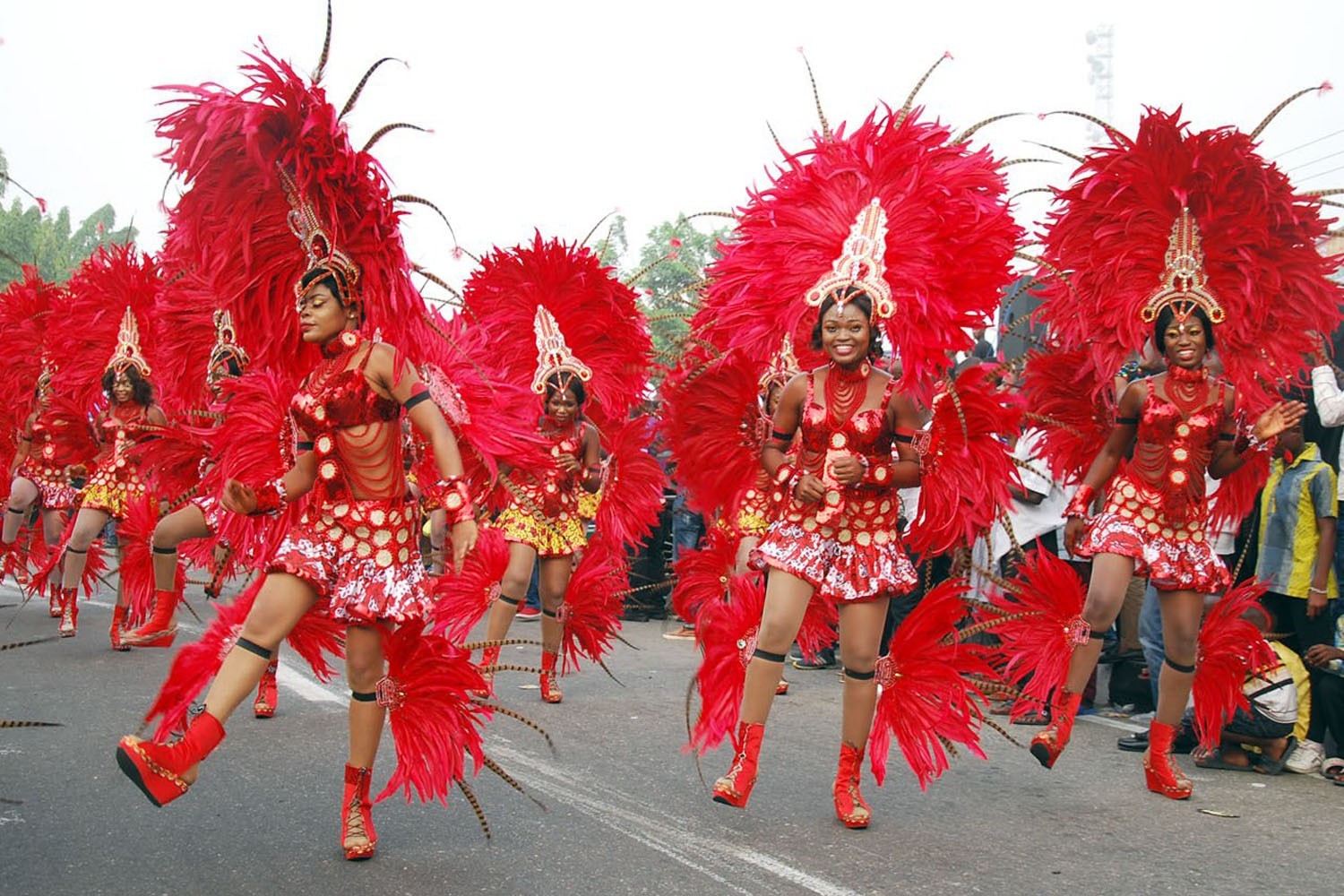
Photo credit: bbcpidgin/folio
Lake of Stars Festival
The Lake of Stars Festival is an internationally renowned arts and music festival that takes place on the palm-fringed shore of Lake Malawi every year. Lake Malawi, which is the ninth largest lake in the world and third largest and second deepest lake in Malawi, is located between Malawi, Tanzania, and Mozambique. Lying within the Western Rift Valley, Lake Malawi is also one of the deepest lakes in the world. For over a decade, Lake of Stars has drawn musicians and visitors from around the world to Malawi’s shores.
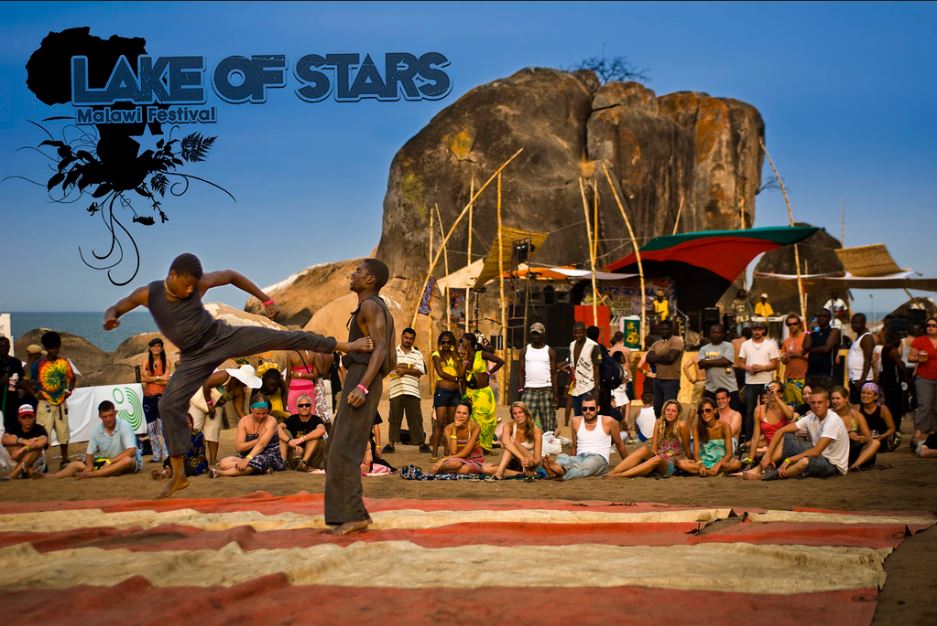
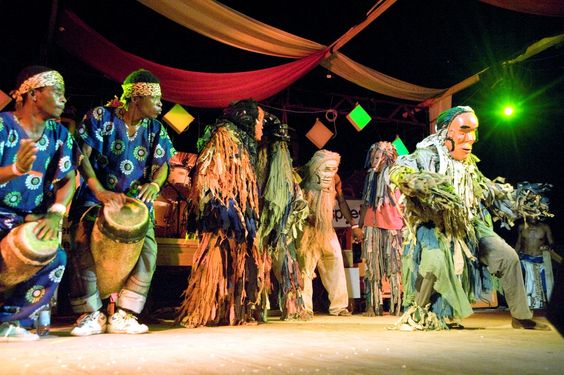
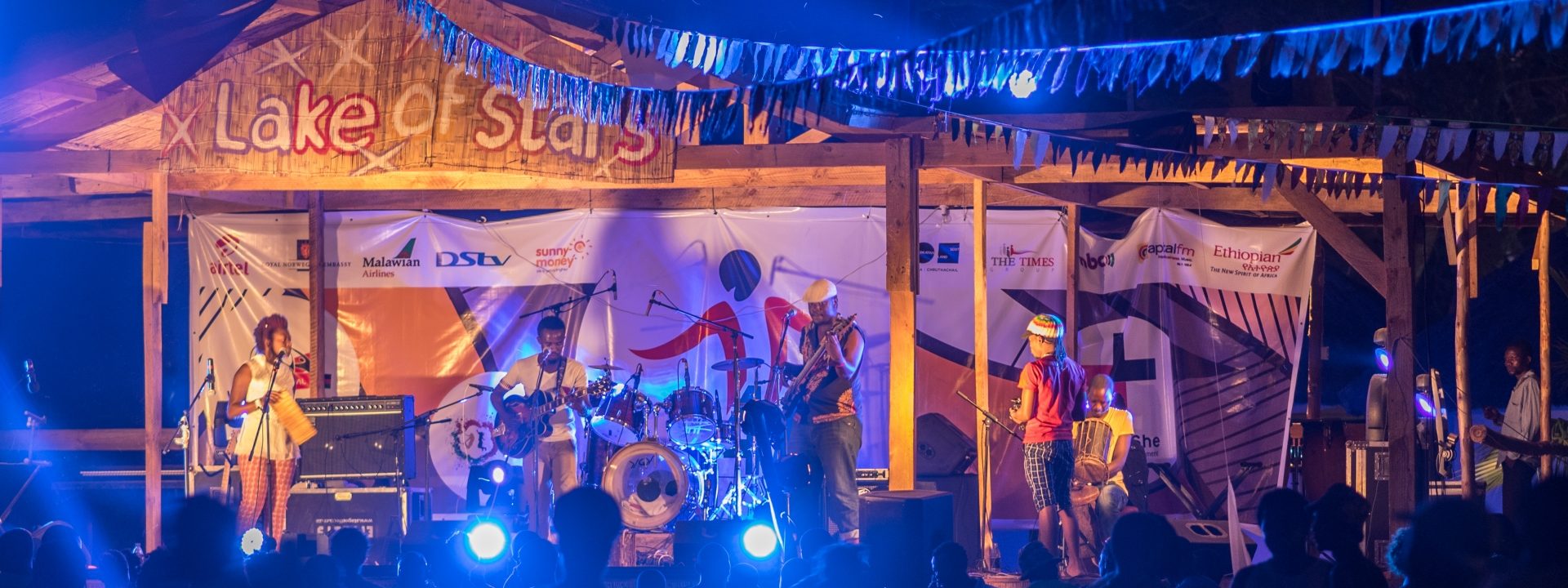
Photo Credit: Flickr
Food
Because of Africa’s diversity, there are many meals unique to many ethnicities and tribes. Let’s explore some yummy African meals.
Harira
This meal is an authentic Moroccan soup made of tomato, lentils, and chickpeas. It also includes meat, making it a filling and satisfying dish. There are many variations of this traditional soup and these variations have been passed from generation to generation.
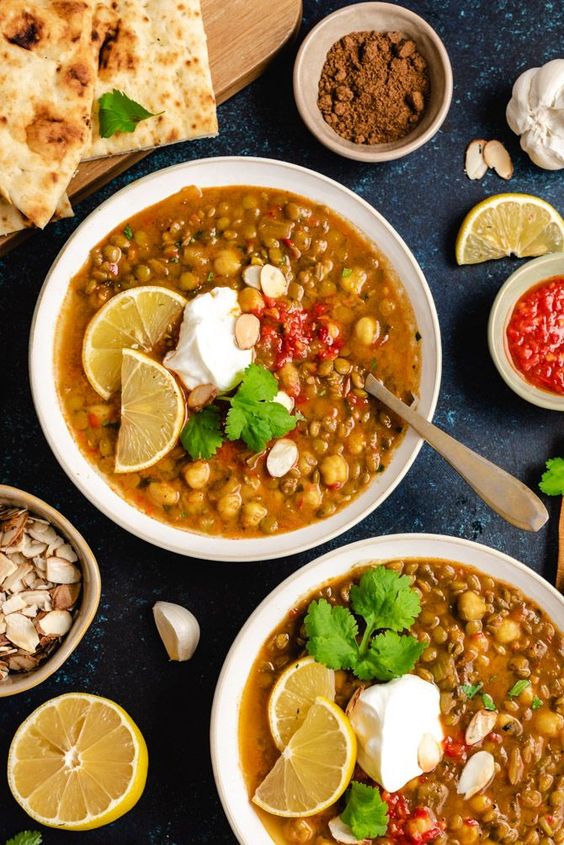
Photo credit: host the toast
Skoudehkaris
The Skoudehkaris is a meal that originated in Djibouti, in East Africa. Skoudehkaris is a flavourful rice dish seasoned with cardamom and cooked with lamb, chicken, beef, or fish.
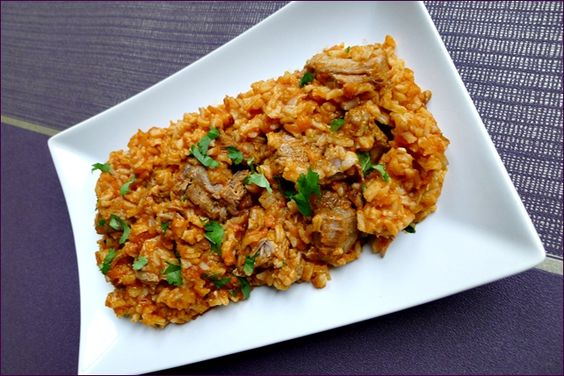
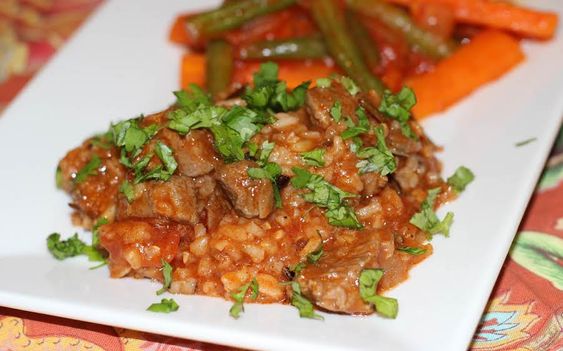
Photo Credit: Pinterest
Potjiekos
This South African dish is prepared outdoor. Potjiekos is a traditional dish that is cooked slowly in an iron pan that is placed on hot coal. Translated as ‘small pot food’, Potjiekos is never stirred during the cooking process.
The spiral-shaped cuisine, Boerewors, is also a popular meal eaten in South Africa and Namibia. Shaped into a coil, Boerewors contains at least 90% meat, and 10% spices. Boerewors is traditionally grilled on the braai (South African barbecue), and it’s usually served with pap and sous (sauce)
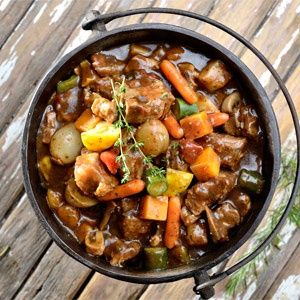
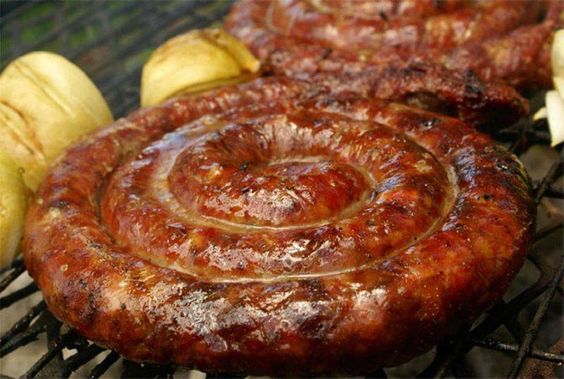
Photo credit: Pinterest
Senegalese Chicken Yassa
Senegalese Chicken Yassa is a tangy-spicy dish enjoyed in the West African region. It is a popular Senegalese dish made from caramelized onions, dijon mustard, lemon juice, and chicken cooked in a creamy sauce.
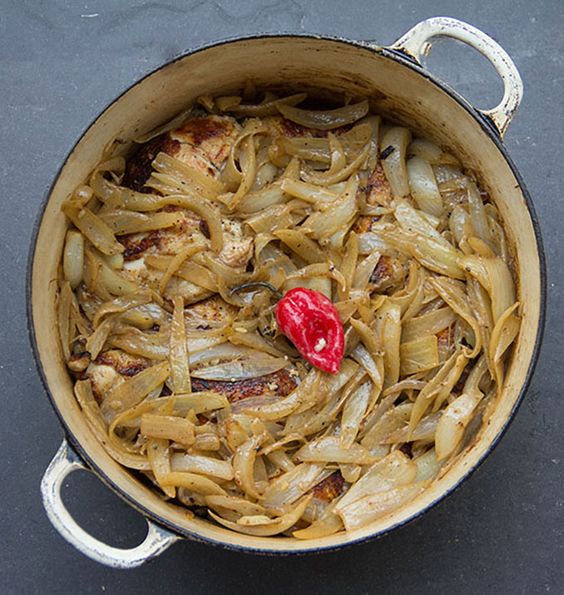
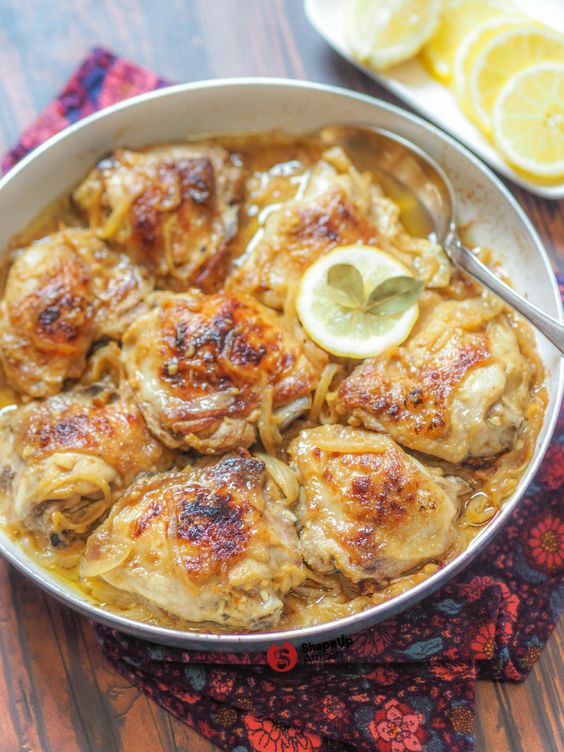
Photo credit: Pinterest
Jollof Rice
Can we ever talk about West Africa cuisines without mentioning the almighty jollof rice? Jollof rice, also known as benachin in Wolof, is a one-pot rice dish that is popular in many West African countries such as Ghana, Nigeria, The Gambia, Senegal, Cameroon, Sierra Leone, Côte d’Ivoire, Liberia, Togo, and Mali. It is also called ‘reddish one-pot dish’ and varies in these countries.
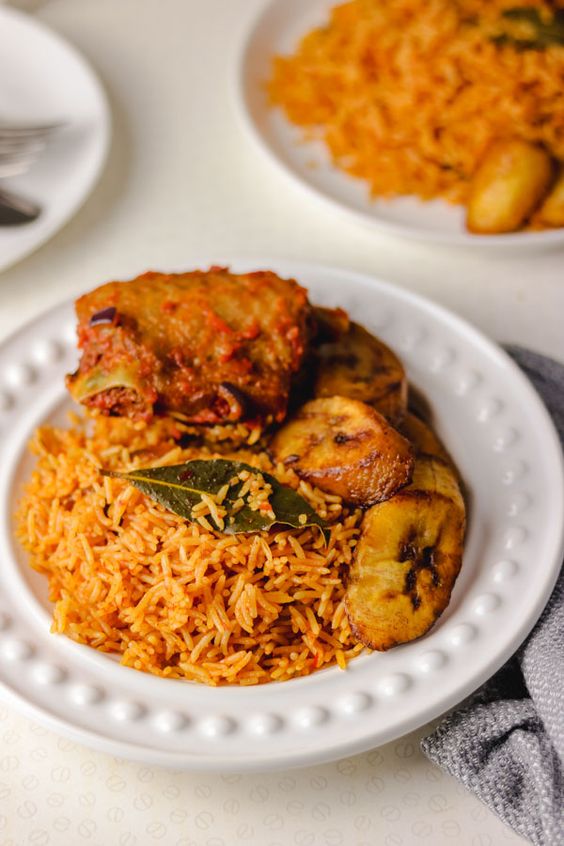
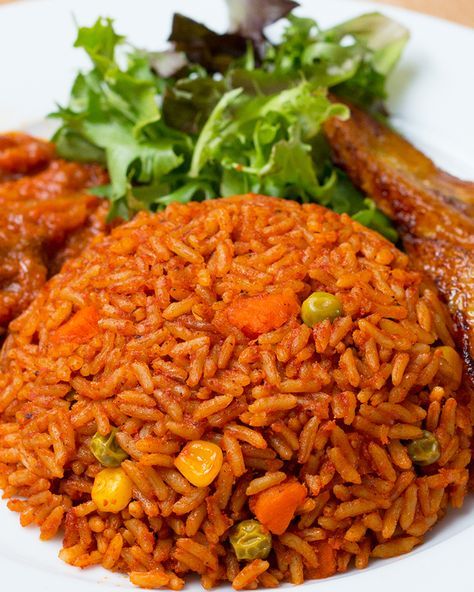
Photo credit: Pinterest
African Masquerades
Believed to be the link between the gods and humans, masquerades are an important part of the African culture. See the various masquerades in Africa:
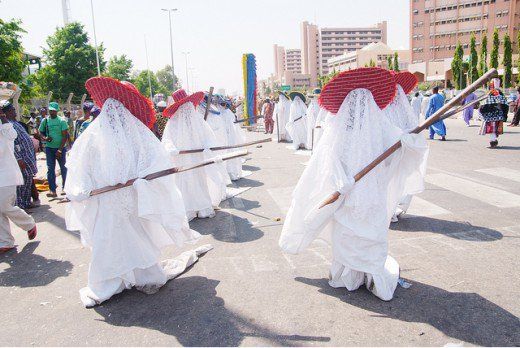
Eyo from the Yoruba tribe, Nigeria. Source: Pinterest
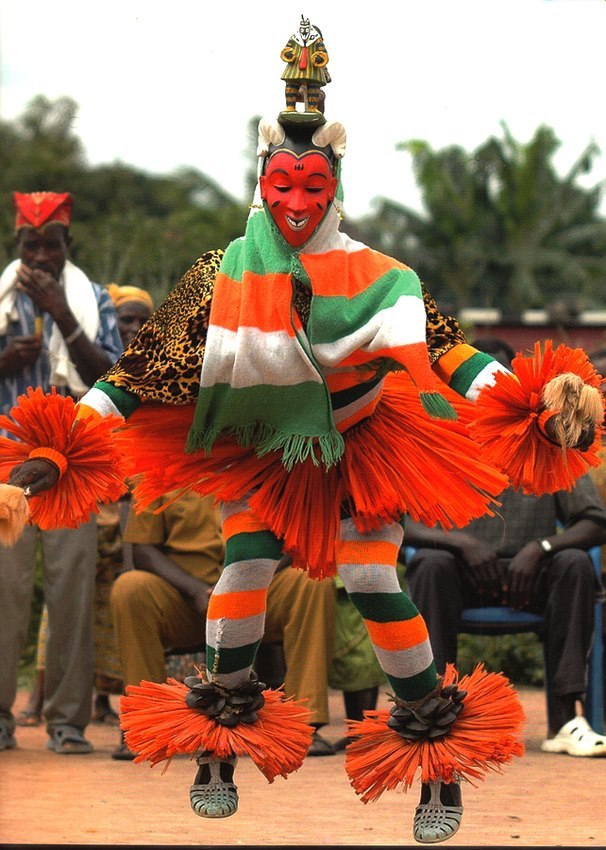
Gouro masked dancer (Ivory Coast). Source: Androphilia
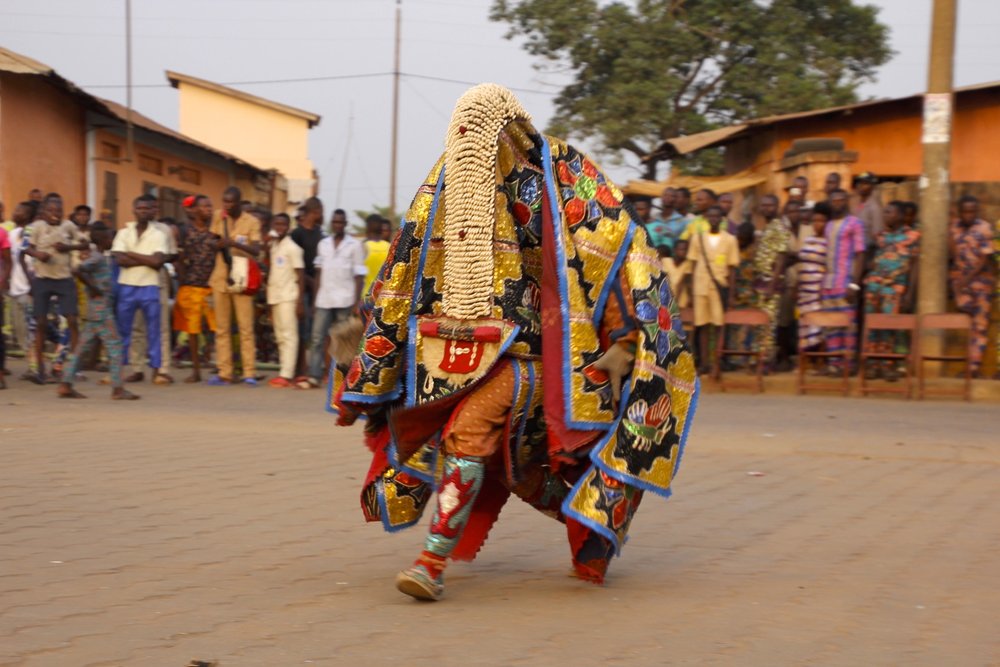
Egungun – Yoruba, Nigeria. Source: Pinterest
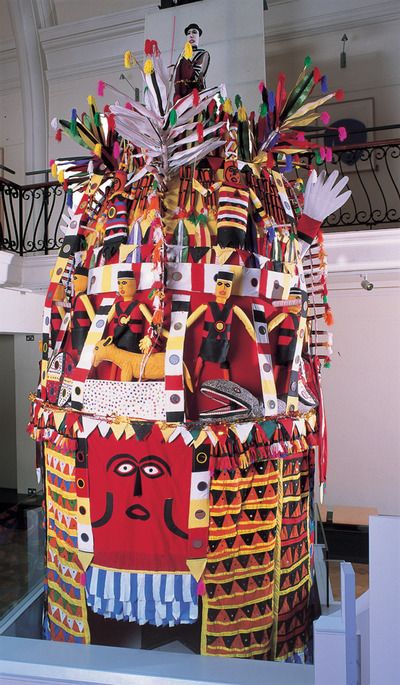
Ijele – Igbo, Nigeria. Source: Pinterest
Geography
Believed to be the ‘cradle of humankind’, Africa is the only continent with fossil evidence of human beings.
Fun facts to know:
- Africa occupies 30.4 million square kilometres in the world. Africa is 3 times bigger than the United States. Africa is also bigger than China, India, the contiguous U.S., and most of Europe combined!
- Africa has approximately 30% of the earth’s remaining mineral resources.
- It is divided up into five sub-sections; North Africa, East Africa, Central Africa, Southern Africa, and West Africa.
- The length and breadth of Africa are almost the same: Horizontal width is 4,355 miles (7,009 km) from Dakar, Senegal east to Mogadishu, Somalia. The vertical length is 4,504 miles (7,248 km) from Cape Town, South Africa north to Tripoli, Libya.
- Located in Northern Africa with a Mediterranean coastline and a Saharan desert interior, Algeria is the biggest country in Africa with 2.4 million square kilometres of land. there are also 34 million people in Algeria.
- With a population of 206 million people, Nigeria is the most populated country in Africa. It is followed by Ethiopia with a population of 115 million inhabitants.
- Africa is the hottest continent in the world. Around 60% of the land surface of Africa comprises drylands and deserts, such as the Sahara Desert and the Danakil Desert.
- Africa is home to the second-longest river in the world and the world’s largest non-polar desert.
- Located in Tanzania, Mount Kilimanjaro is the highest mountain in Africa and the highest free-standing mountain in the world.
- Bir Tawil is a region in Africa that belongs to no country or individual. Bir Tawil maintains a ‘nobody’s land’ status.
Economy
For many Nigerians, they believe that the phrase ‘Giant of Africa’ comes with economic power and wealth. Well, it isn’t so. Although Nigeria has the largest economy in Africa, it is not Africa’s richest country and close to 100 million Nigerians live in abject poverty.
Fun facts to know:
- According to swedishnomad, Seychelles is the richest nation in Africa with 31.81 thousand GDP per capita.
- Somalia has the lowest GDP in Africa.
- The top five poorest countries in the world are the Central African Republic, Burundi, the Democratic Republic of Congo, Niger, and Malawi – they are all from Africa.
- As of 2016, East Africa was termed the fastest-growing region in Africa.
- In 2034, Africa is expected to have the world’s largest working-age population of 1.1 billion.
- South Sudan is currently the fastest-growing economy in Africa.
- Between 2020-2024, Foresight Africa report predicts that Senegal, Rwanda, Niger, Uganda and Mozambique will be the five fastest-growing economies in Africa.
History/Politics
From the trans-Atlantic slave trade to wars, colonisation, military regimes, independence, and so on, Africa is one continent with rich historical events and stories.
Few things you should know
- Liberia and Ethiopia are the only African countries that have never been colonised.
- In the 20th century, Africa had the Somali Civil War – 1991, Nigerian Civil War – 1967, Rwandan Genocide – 1994, The Lord’s Resistance Army Insurgence in Uganda – 1987, and the Eritrean-Ethiopian War in 1998.
- The seven prominent civil wars in Africa are the Nigerian Civil War, the Sudan Civil Wars, Uganda Civil Wars, Liberia Civil War, Mozambique Civil War, South Sudan Civil War, and the Rwanda Civil War.
- Africa belongs to several African organisations such as the African Union, Organisation of African Unity, African Development Bank, Pan-African parliament, and many others.
- Prior to the 15th century, Africa was an independent continent that did not need the intrusion of Europeans before it could be categorised as ‘developed’ or civilised. Economically, politically, culturally, and scientific development was perhaps more advanced in Africa than in other continents.
While these are the basic day-to-day information we should know about the African continent, there is so much more to Africa and Africans. We’re going to explore all these and more when we kick off our series, The 54. So watch this space.
In the meantime, here’s how you can learn more about Africa:
Google is your friend
Google loves everyone, including you. If you are curious about any aspect of Africa, type it into the search bar and you’ll be sure of getting replies. You can read more than one site to get the correct information.
Read books
There are so many books that tell the history of Africa and you can learn from them. A few are:
- There Was A Country by Chinua Achebe (A recount of the Nigerian Civil War from Achebe’s point of view)
-
Magema Fuze: The Making of a Kholwa Intellectual by Hlonipha Mokoena
- The Prison Letters and Long Walk to Freedom – written by Nelson Mandela
- Roots, by Alex Harley
-
Saltwater Slavery by Stephanie E. Smallwood
-
Dreams of Africa in Alabama by Sylviane A. Diouf, and so many other books.
Watch movies
For people who do not like to read books, watching movies is an awesome way to learn about slavery and its historical roots in Africa. Here are some movies you can watch:
- Twelve Years a Slave
- The Day God Walked Away
- Ganga Zumba
- Roots
- Beasts of No Nation, and many others.
Above all, have an open mind
As a Nigerian, it is tempting to think that your country is bigger and better than every other African country, or that Africa ends in West Africa. However, if you have an open mind, you will be able to learn about other African countries, their economy, politics, their people and cultures, and the beauty and uniqueness of this large continent. And to all our non-African folks, remember, Africa is not a country.
**
Photo by Bestbe Models from Pexels

